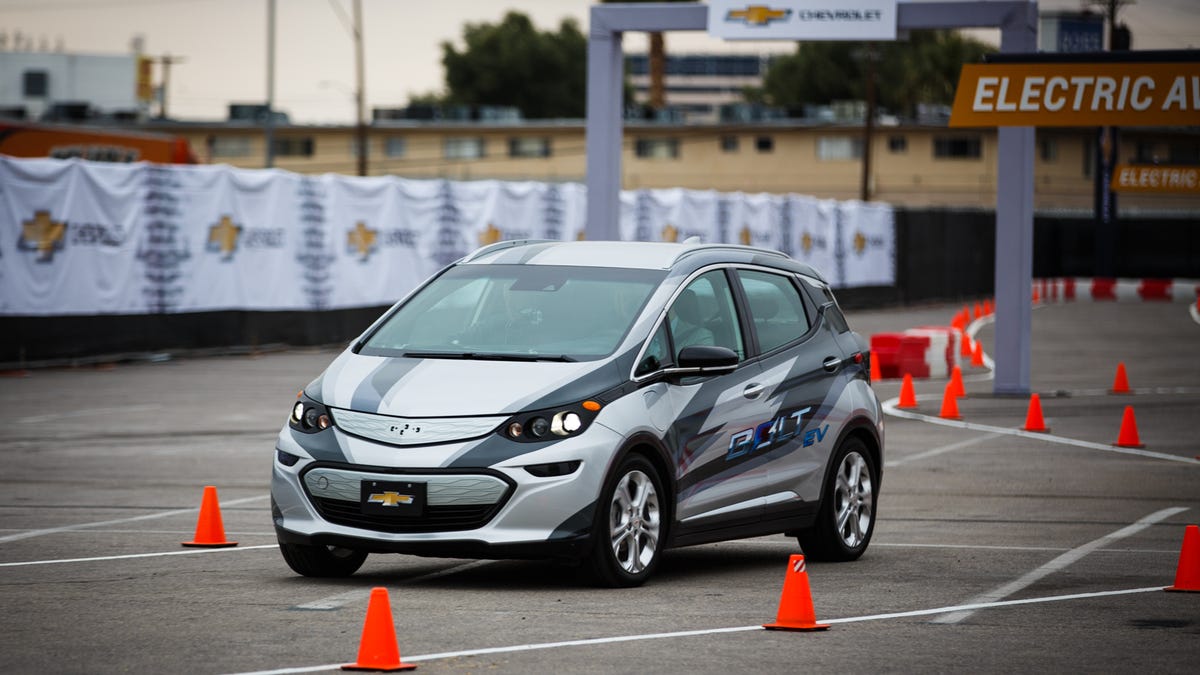CES 2016 focuses on the driver, and the game-changing Chevy Bolt EV
As in past years, self-driving car tech remains big at CES 2016, but more concepts were focused on how we can interact with cars through visual input and gestures. Meanwhile, Chevy unveiled its new Bolt EV, the most practical electric car yet.
Self-driving cars remain a hot topic in automotive tech, and there were certainly examples at CES 2016, but the focus at this year's show was more on how drivers will interact with their cars. We saw many concept dashboards, displays and futuristic means of engaging with all the cloud-connected information that will be coming to our cars.
A highlight of the show, however, was not really futuristic or self-driving, but it is real, the Chevrolet Bolt electric vehicle. GM CEO Mary Barra introduced the Bolt during her keynote address on Wednesday, confirming earlier news that this electric vehicle would offer up to 200 miles of range and cost around $30,000. Those figures are very important, although that price is after federal incentives, so the actual price from GM will be just under $40,000. Barra also pointed out the car would be available in all states, with support from Chevrolet's 3,000 dealers. If its range holds true, this little hatchback could be a turning point for widespread EV adoption.
And check out more cars from CNET in our Tech my ride gallery, including the Rinspeed Σtos and Volkswagen Budd-e electric microvan.
Mercedes-Benz also brought something slated for production to the show, the dashboard electronics and steering wheel controller for its updated E-Class model. The car itself will be unveiled in Detroit next week, so this dashboard look is kind of a sneak peek. On the steering wheel, Mercedes-Benz uses solid-state touch controllers that let you swipe and scroll menus.
Stepping back a little, both BMW and Visteon showed gesture control systems for dashboard tech, eliminating the need to touch anything. The BMW i Vision Future Interaction is a concept car all about exploring different means of interacting with its systems. Equipment supplier Visteon showed a very practical-looking gesture system that its automotive customers could deploy in the next few years.
Garmin took touch out of the screen for its concept dashboard, but also cleaned up the litter of buttons and dials found in many new cars. Instead, its Lenexa dashboard uses four multi-controllers that let the driver access all the car's systems. Bosch took a more traditional approach, filling its concept car with touchscreens, but emphasizing connectivity and personalization. Your car knows who you are and what you like, and can even let you view webcams in your house.
And then there was FANCI, a European consortium which brought a concept dashboard to CES that watches you to determine where you are looking and your current mood. You can look at a screen and focus on a button or area, highlighting a menu that you can then open with a gesture control.
The dashboard of the future, and how you will use it, at CES 2016 (pictures)
See all photosIn fact, we saw so many futuristic dashboard concepts that we put them together in our Dashboards of the future gallery.
And although lacking the emphasis of last year, the self-driving car saw some enabling technology and corporate support. Nvidia unveiled its Drive PX 2 computer, a more powerful version of the Drive PX computer shown last year, built to help automakers develop and test self-driving cars. At his press conference, Nvidia CEO Jen-Hsun Huang said the Drive PX 2 was as powerful as 150 MacBook Pros. Both Ford and Toyota announced continuing research into self-driving cars, with Toyota introducing Dr. Gill Pratt, who has assembled a team to develop the technology.


